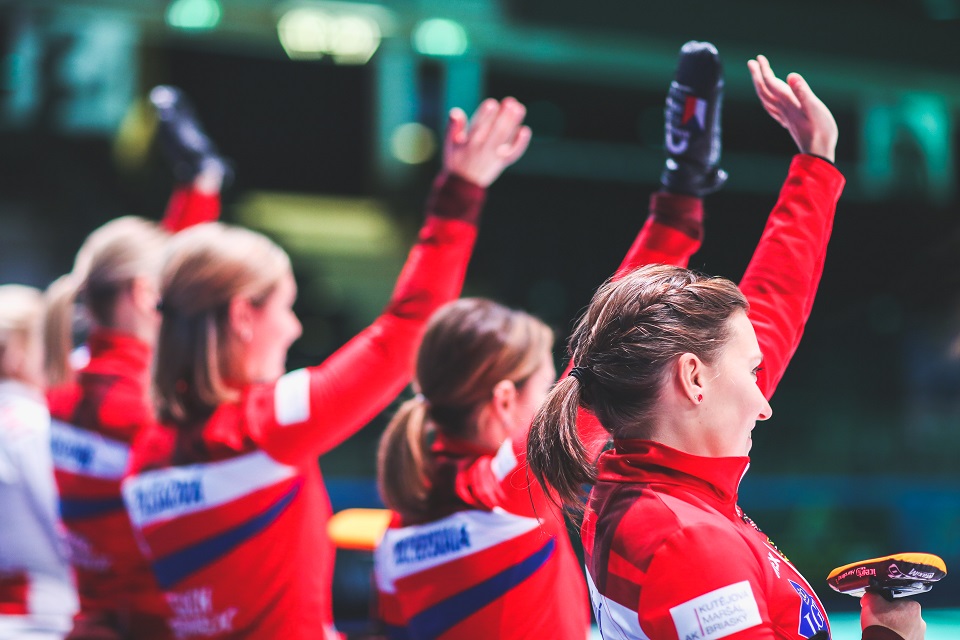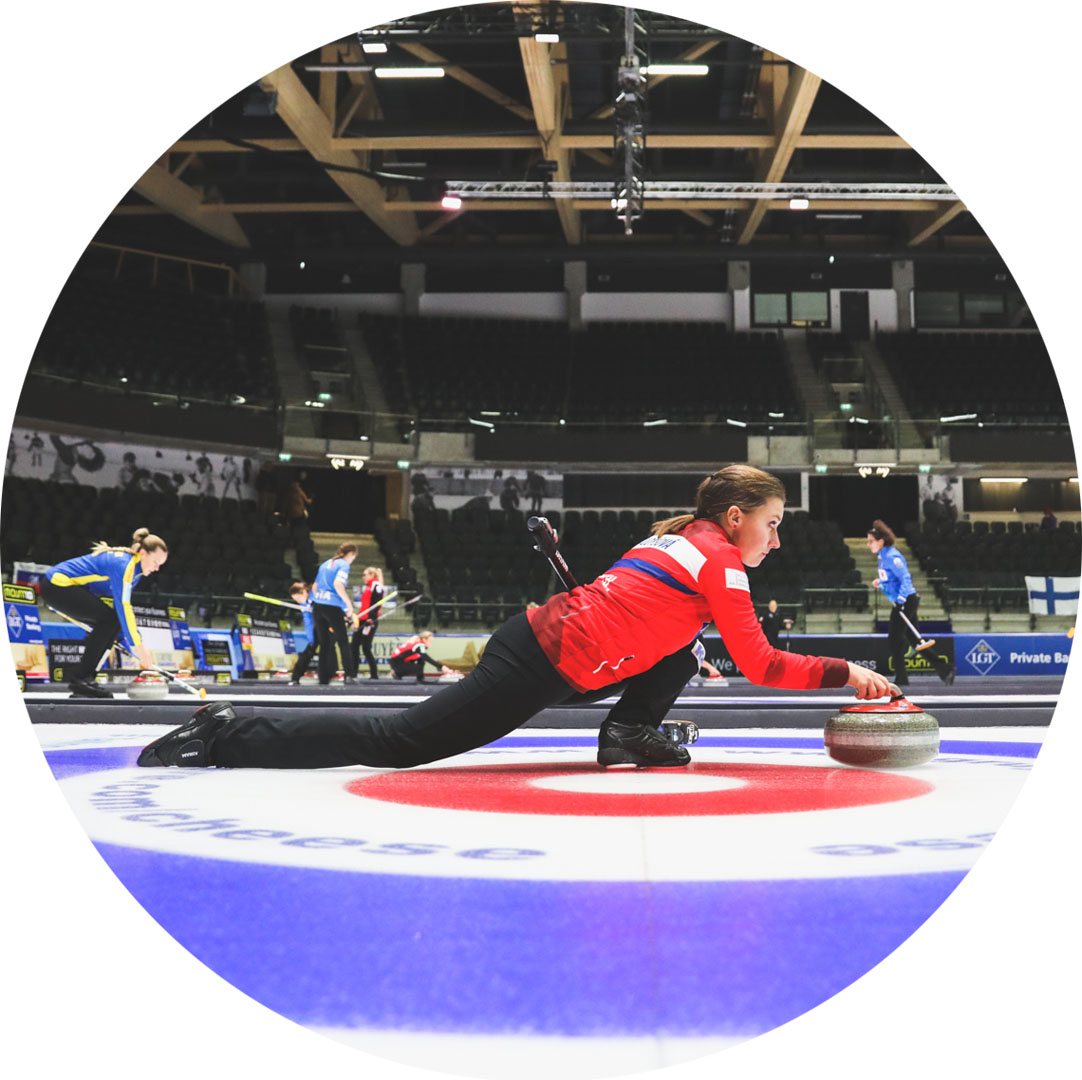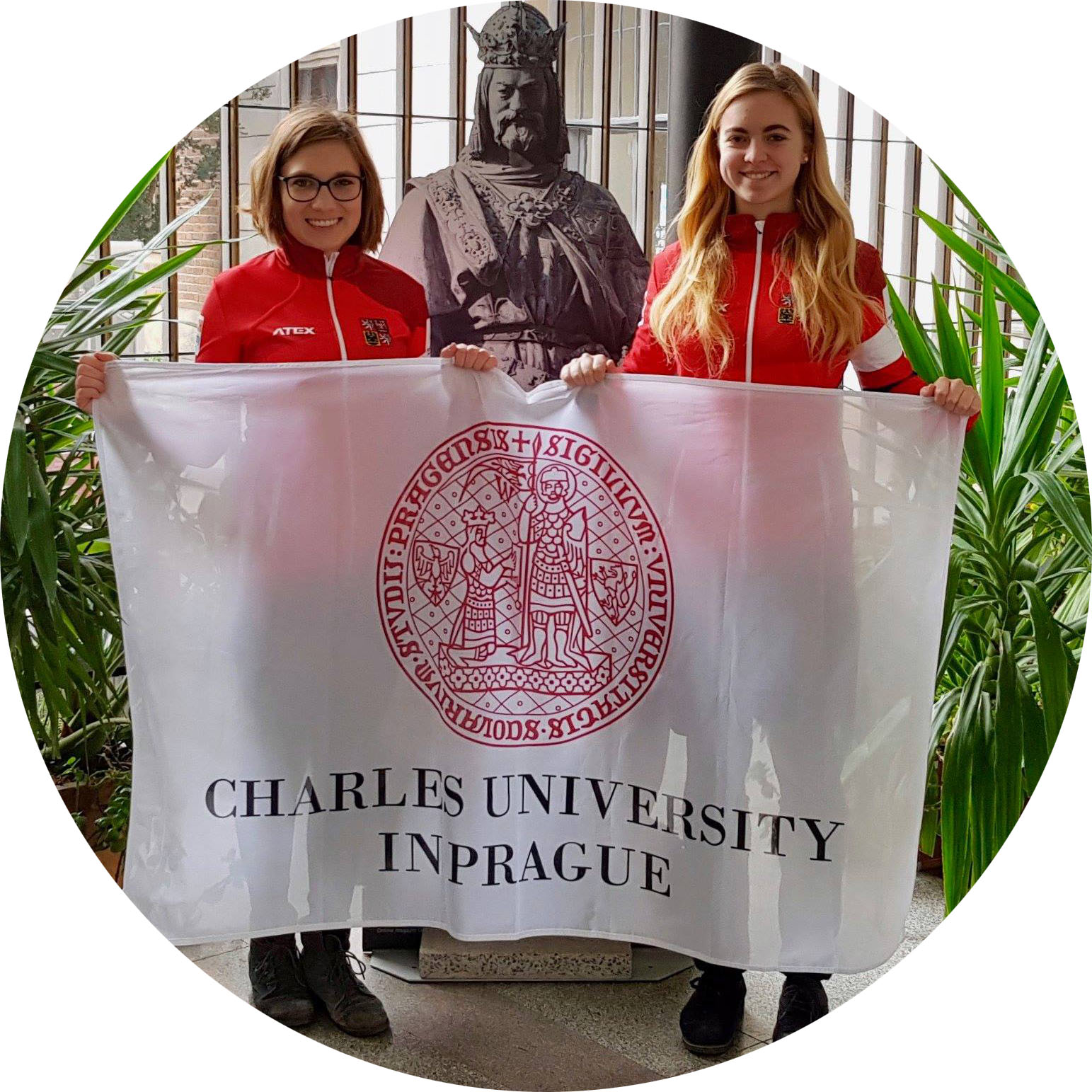on curling in the Czech Republic
The Czech Women’s Curling team ranks 10th in the world rankings and last year finished sixth in the World Championship. The Faculty of Sciences’ Alžběta Baudyšová – who is completing her degree and says she hopes to teach and work as a trainer one day – for now she also is totally focussed on getting the best results in a cool sport referred to as “Chess on Ice”.
How long have you been active in curling and when did you first get into the sport?
“I’ve been doing sports all of my life: I started with athletics and gymnastics and canoe slalom. At a certain point, I had a moment of crisis and decided I wanted to continue in a sport where I could get better results. At the same time, it had to be a sport I could take up at the age of 15, which is a little late. I was watching the winter Olympic Games in Vancouver and they were talking about a German competitor who started curling at 14 – and that helped me decide. It also helped that my dad had a colleague in Slovakia who had been on a team and introduced me to a trainer. That settled it and I started in 2010.”
How popular is the sport in the Czech Republic?
“We have three different leagues including the top flight and first division. The problem is there isn’t enough quality competition which is why we also compete in Canada. They have so many great teams that you can be sure that whoever is leading in the standings is playing at their best. It is expensive to compete there but necessary to be successful down the line.”
My apologies, but isn’t curling incredibly boring for viewers?
“I get it. People kind of fit into two camps: the first include strategists who enjoy watching the preparations and preamble ahead of the competition and don’t mind waiting and crunching information about the teams, and the second, larger group is those who find the sport strange. Those are in the majority. Maybe because they never tried it and don’t ‘get it’. A single game takes two-and-a-half to three hours. Which is deadly for audiences. The curling federation is of course aware of the problem and is trying to figure out how to make the sport more attractive to viewers without changing the rules significantly.”
“It’s a team sport where two four-member teams face off and take turns ‘curling’ or sending rocks (also called stones) towards a target known as the ‘curling house’ and trying to send them closest to the centre. That doesn't mean every shot is aimed at the centre where they can easily be knocked out by the opposing team.
“The first four shots in a game are ‘guards’ within an end (which is complete when each team has shot all eight of its stones). A regular game sees eight or 10 ends. Once you have the guards out, you have to send or curl the stones around them to get closest to the centre. Only one team scores per end and the number of points is determined by how many stones they get closer to the centre than the losing team’s best shot.”
It sounds like strategy plays an important role…
“It absolutely does. If you have opposing skips (or skippers) of equal skill then it all comes down to strategy: if you choose a poor strategy at the top level it can definitely be the margin of difference. Of course, you can also just play for fun on a pond and simply slide the stone as best you can and there strategy goes out the window.”
Is it fair to say that success depends on how much you mess up the opposing team’s shots?
“Well you have to think about it every shot: every shot and potential impact has to be considered based on how useful or dangerous game-wise it could prove for the opponent.”
 Are there shots you never forget?
Are there shots you never forget?
“You definitely remember the captain’s (or skip’s) shots. Because they often decide matches. You can’t help but remember those.”
The skipper has the final word when it comes to the overall approach?
“She is responsible for the strategy. Those on the front end, who play the first one or two stones keep track of the remaining time and monitor the quality of the ice on sections of the surface or curling sheet.”
Wait, the surface isn’t the same at all venues?
“No. Like in golf, for example, each playing area is different. The first thing you have to do is read the sheet to see if there are any spots where the stones don’t curl enough or just behave strangely. It is the task of the starting team players to read the surface.”
How does the surface differ from regular ice?
“Shooting stones on regular ice would require considerable strength: curling ice is harder and a lot thinner, a maximum five centimetres thick. The ice is also prepared differently: its dry cut and ‘pebbled’ or sprayed with droplets of water across the surface for a smoother slide. Basically, the stone never touches the full surface and that, also, is why curling brooms are so important in the final result.”
Curling brooms are important since they influence the trajectory and speed of a stone: I apologise for the question, but I wondered if you a are a fan of sweeping up at home?
“Not much, I have to admit. Although both use brooms, housecleaning and curling have nothing in common.”
What is next for you and for the national team?
“In September we will be travelling to Canada and training there as well as taking part in a number of World Cup events. I am looking forward to the European Championships in November and I hope we will qualify for the World Championships. It would also be amazing if we had a shot at qualifying for the Olympics!”
“Incredibly hard! There are international teams which are really good: the difference is that they have professional sportsmen and women. The Czech women’s team is below the top 10 but in our country it is still an amateur sport only with professional-level demands. You have to travel a minimum of 50 days a year, which means taking holiday time if you are employed, not counting weekends.
“It is very financially draining and time-intense. And you have to go full-speed ahead: it’s not a part-time commitment. If we want to make it to the Olympics, it will require success at the European Championships and beyond.”
How difficult is it to combine a top-level sport with your studies?
“It’s quite doable. A lot of credits are given for laboratory work tied to the Master’s thesis. I have quite a bit of freedom when it comes to dividing-up the work and dividing-up my time. I have a mentor at the Czech Academy of Sciences’ Institute of Chemistry and Biochemistry, Biologist Zuzana Kečkéšová, who sees it’s not a problem for me to come in on weekends and so on, so when I need time off to compete, I can.”
Where would you like to be in 10 years’ time?
“I would be happy as a trainer. Because I am also studying to be a teacher of biology and chemistry it would be ideal if I could teach in the morning and work as a curling trainer in the afternoon.”
 Did you consider continuing in scientific research?
Did you consider continuing in scientific research?
“I did. But because I have spent a lot of time on my thesis I wanted to take time off from science for a while. Next year I want to study only teaching and focus only on curling. Until the Olympics, I want to focus primarily on sport. I want to be able to say I did everything I could and then I’ll see. Maybe I’ll return to science. I like the challenges the field presents, not unlike the world of sport. But I desire something more stable.”
To come back to curling, I heard the team captain has tattoos on her body commemorating important victories…
“Yes, she has a line per win the way, like the marks per mug of beer made on a piece of paper at Czech pubs. I don’t do anything like that: I hang onto my medals and stick them in a box.”
|
|
Translated and Edited by Jan Velinger
Published by UNIMEDIA




















